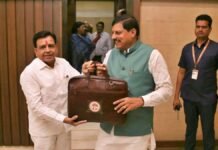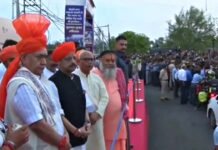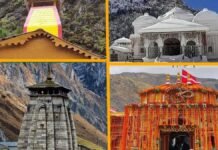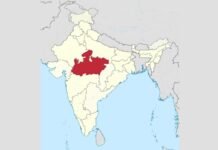
New Delhi: The Delhi-Mumbai Expressway, which will be the longest expressway in India, is nearing completion. The first phase of the expressway, from New Delhi to Dausa in Rajasthan, was inaugurated by Prime Minister Narendra Modi on September 16, 2021. Now, the second phase of the expressway, from Dausa to Kota in Rajasthan and from Thandla to Mandsaur in Madhya Pradesh, has also been opened for traffic. The expressway will pass through six states – Delhi, Haryana, Rajasthan, Madhya Pradesh, Gujarat, and Maharashtra – and connect the national capital with the financial capital of the country. The total length of the expressway is 1,386 km, out of which 245 km falls in Madhya Pradesh³. The expressway will pass through three districts of Madhya Pradesh – Jhabua, Ratlam, and Mandsaur.
The opening of the expressway in Madhya Pradesh will provide a lot of convenience to the commuters. The expressway is an 8-lane access-controlled greenfield expressway with scope for future expansion up to 12 lanes. The commuters can drive their cars at a speed of 120 kilometers per hour on this expressway⁶. However, they should be aware that entry of five types of vehicles is prohibited on the expressway. These are tractors, bikes, straw-laden vehicles, harvesters, and autos. These vehicles are banned on the expressway for safety reasons and to avoid congestion.
The toll collection on the Madhya Pradesh section of the Delhi-Mumbai Expressway has not yet started. The National Highways Authority of India (NHAI) officials say that the toll rate on the expressway will be based on cost. The toll rate will vary depending on the number of bridges, culverts, and interchanges on each section of the expressway. The estimated toll rate for small vehicles like car-jeep is Rs 2 to 2.5 per kilometer. For big passenger vehicles like buses and trucks, the toll rate can be Rs 7 per kilometer. The toll collection will be done through the Fastag system. The fasting of the vehicle will be scanned at the entry point and the exit point of the expressway and the toll amount will be deducted automatically from the account according to the distance traveled by the vehicle.
The commuters who are planning to travel on the Delhi-Mumbai Expressway should also keep some food items and sufficient fuel in their cars. This is because, as of now, there are no hotels or petrol pumps on the expressway. The NHAI officials say that they are working on developing wayside amenities along the expressway. These amenities will include resorts, restaurants, food courts, fuel stations, facilities for truckers, logistics parks, charging stations for electric vehicles, helipads, and trauma centres⁵. These amenities will make the journey more comfortable and enjoyable for the commuters.
The Delhi-Mumbai Expressway is expected to be completed by December 2024. The expressway is being built with modern technology and features. It is designed with a 21-meter median on principles of forgiving highways allowing inward expansion. Forgiving highways are road designs that aim to smoothly redirect drivers who go off the highways mistakenly over the exit ways and also aim to provide clear zones to facilitate controlled stops for vehicles when they leave the roads. The expressway is also Asia’s first highway and second only in the world to have animal overpasses and wildlife crossings. These are structures that allow animals to cross over or under the expressway without coming in contact with traffic. These structures help in reducing roadkill and preserving wildlife habitat.
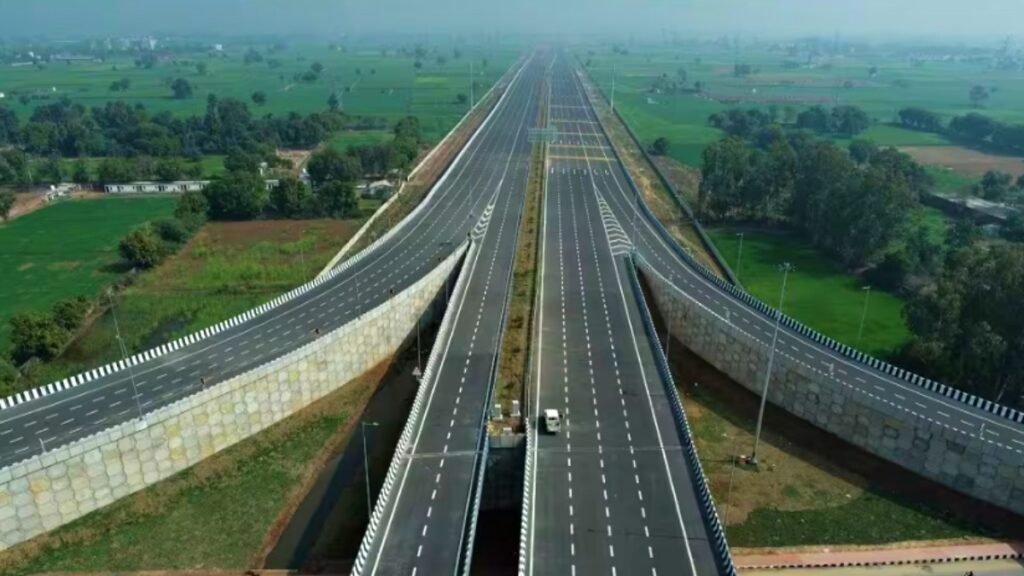
The Delhi-Mumbai Expressway will have multiple benefits for the country. It will reduce travel time between Delhi and Mumbai from nearly 24 hours to 12 hours and shorten the distance by 130 km. It will also reduce fuel consumption and carbon emissions by improving traffic flow and avoiding congested routes. It will boost trade and commerce between Delhi and Mumbai, which are two of the important and vibrant metro cities in India. It will also improve connectivity to other major cities like Jaipur, Kota, Indore, Bhopal, Vadodara, and Surat along its route. It will serve 93 PM Gati Shakti Economic Nodes, 13 Ports, 8 Major Airports, and 8 multi-modal logistics parks (MMLPs) along with spurs to new upcoming greenfield airports such as Jewar Airport, Navi Mumbai Airport and JNPT port⁵. It will also provide a major impetus to industrialization and urbanization along its corridor. It will create employment opportunities for local people during the construction and operation phases. It will also enhance tourism and cultural exchange between different regions of the country. The Delhi-Mumbai Expressway is a landmark project that will transform the road infrastructure and the socio-economic development of the country.















